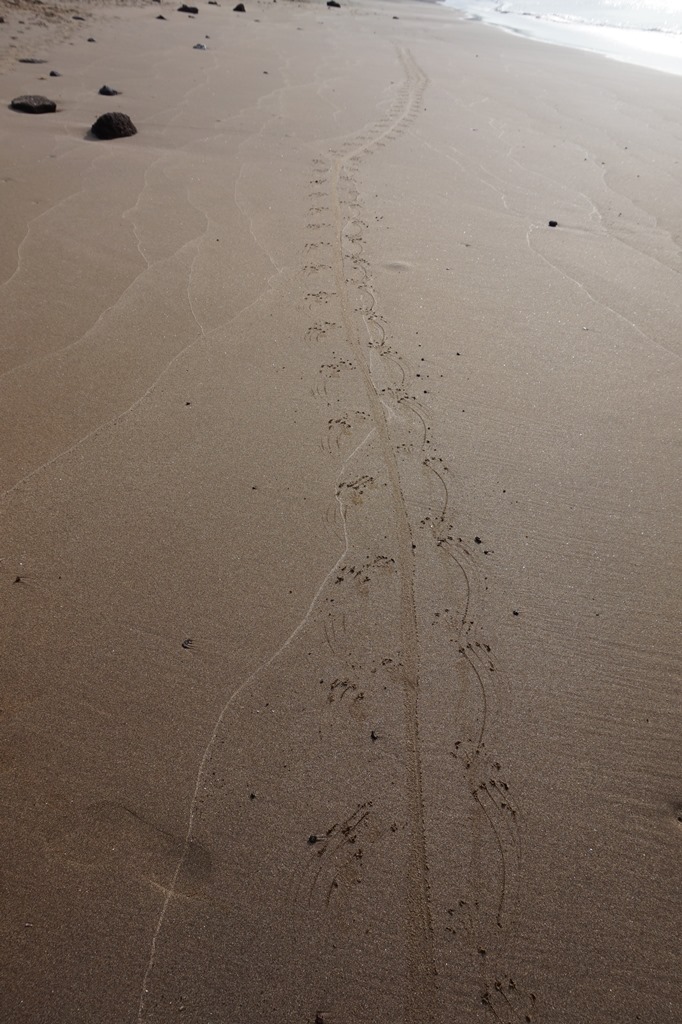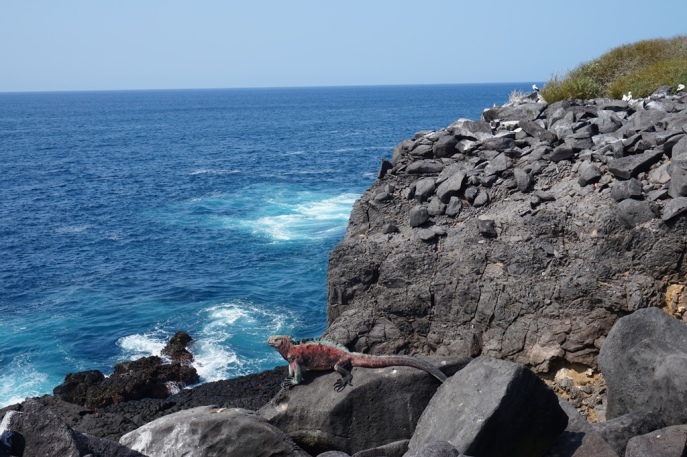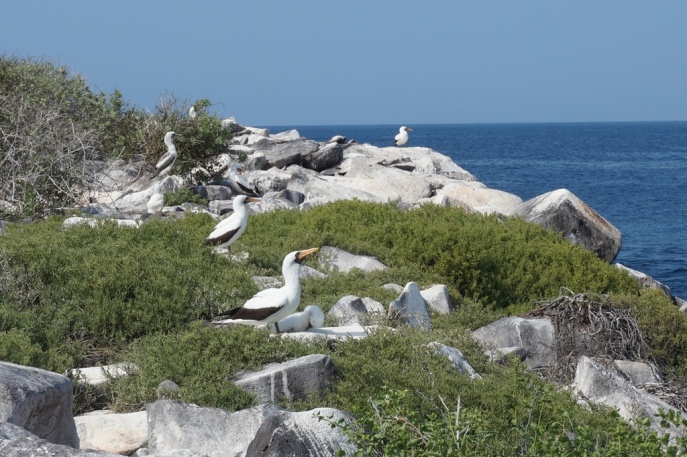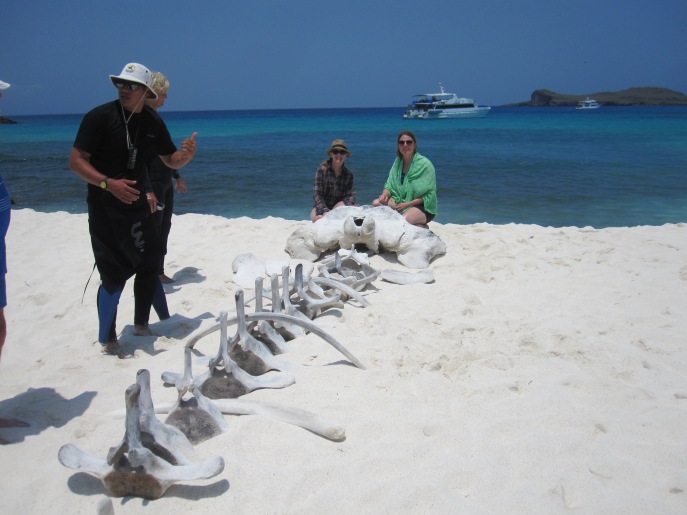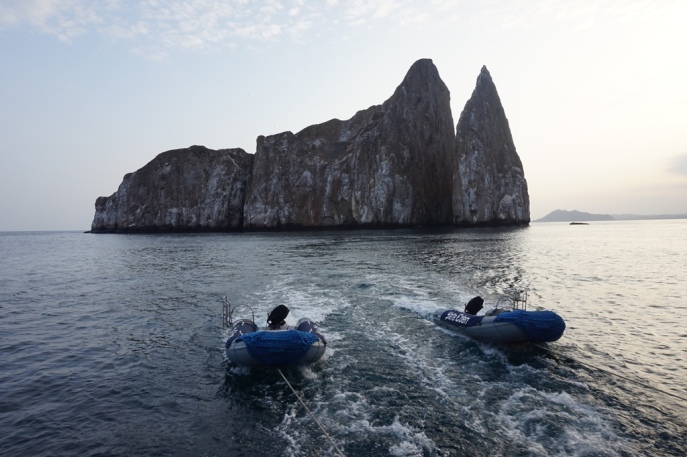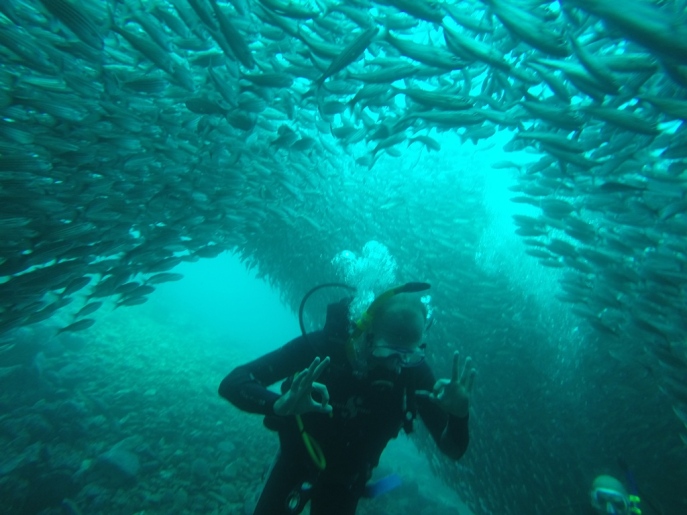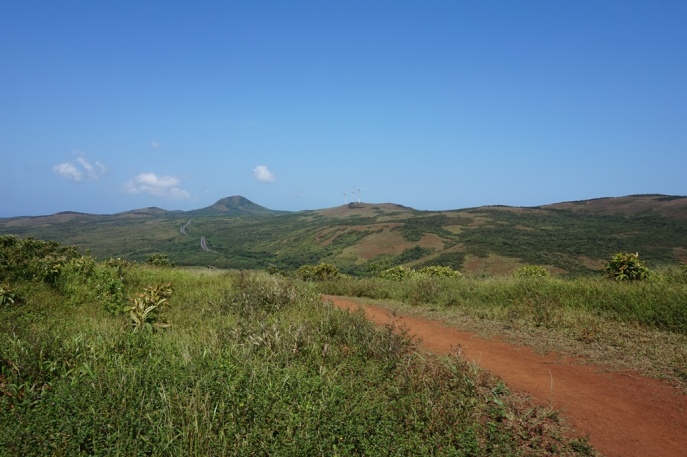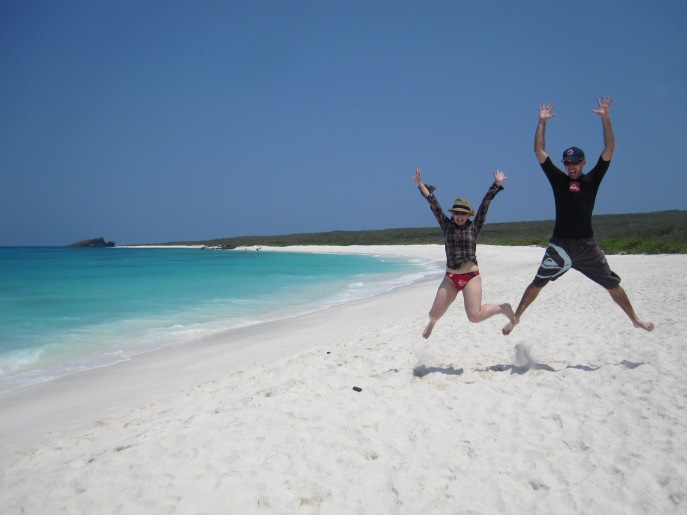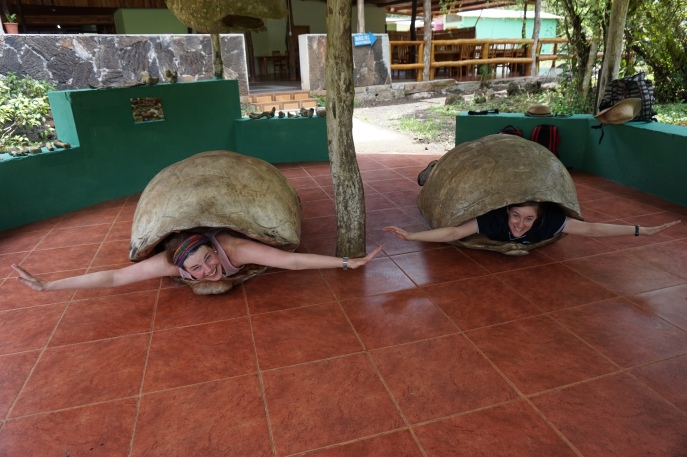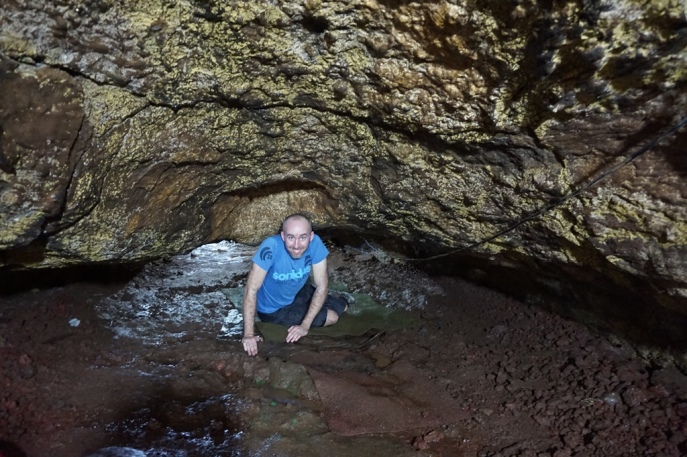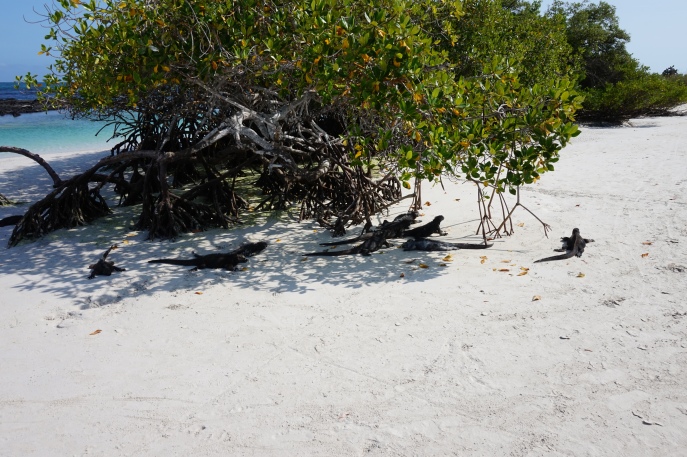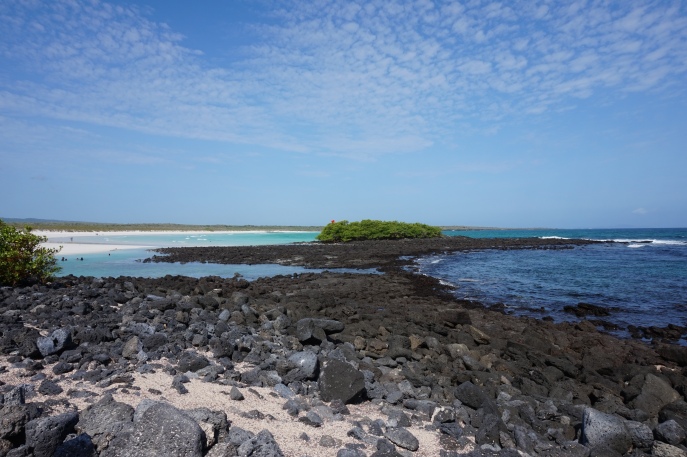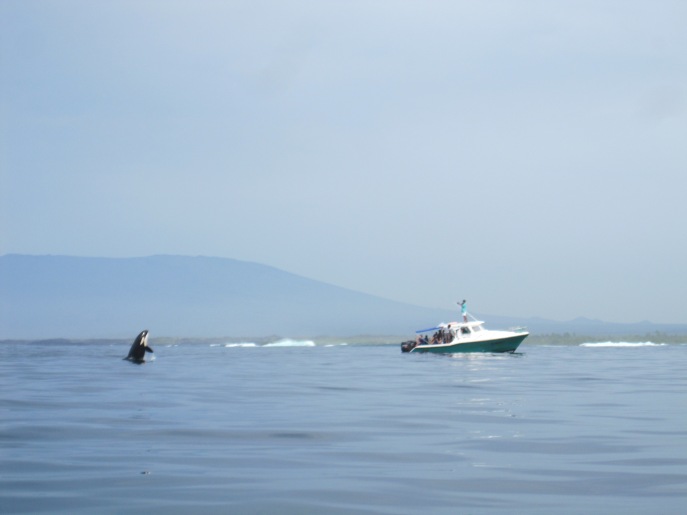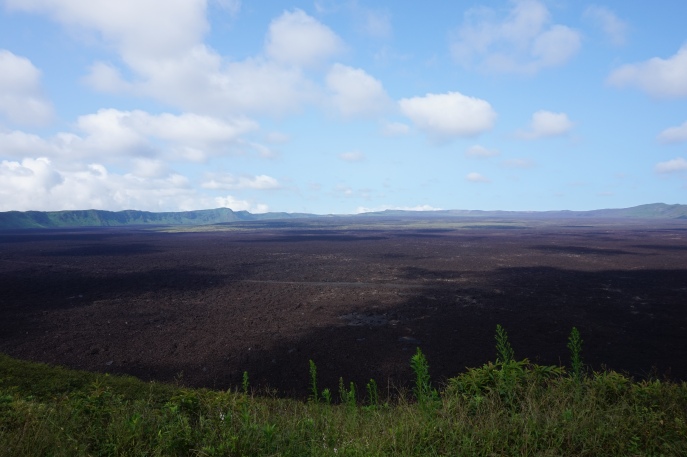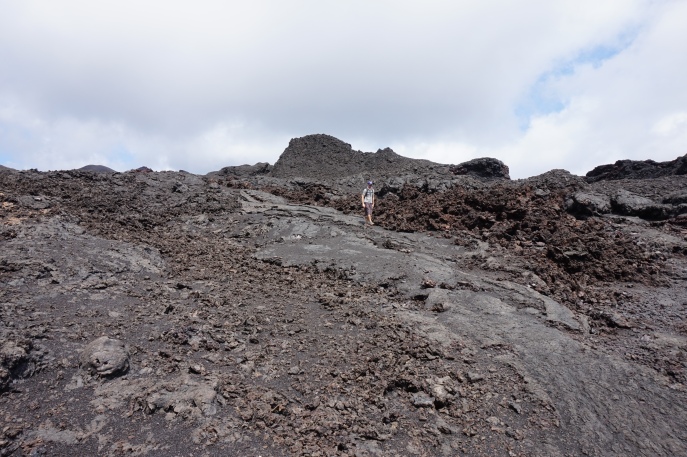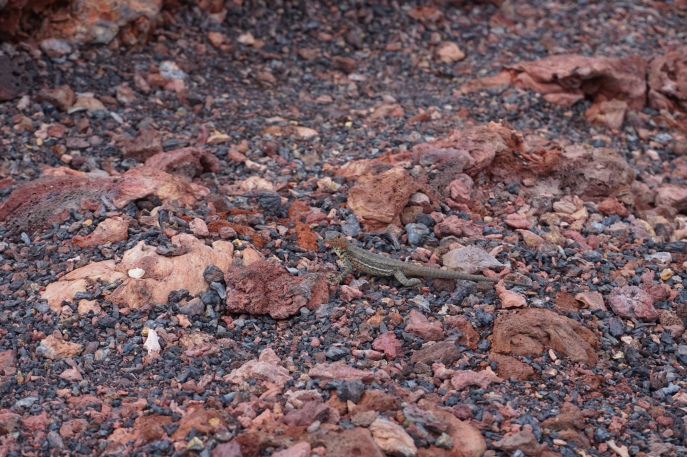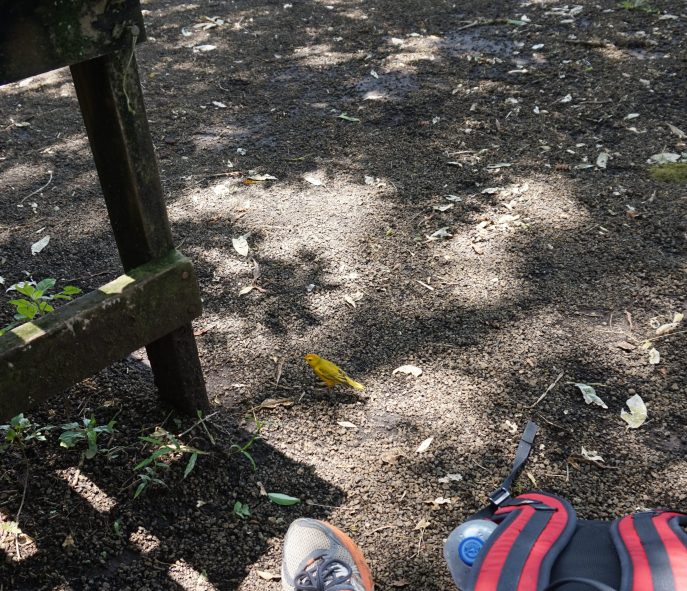We were welcomed aboard the Eden by the other passengers who had already been cruising for several days and our ranger and guide, David. The food was excellent and our first dinner was divine. After the ‘mystery meat’ and rice we’d been served on Isabela anything might taste good, however the buffet of creamy prawns, pasta and SALAD really hit the spot. We settled into our cabin which was small but made good use of the space and with our own ensuite, felt rather luxurious!
Floreana
Overnight our captain navigated us to our next destination and we woke up to the sight of beautiful Floreana. First stop was Post Office Bay where, from 1793, British navigators placed a barrel to leave messages and mail for home-bound travelers. Now, tourists leave unstamped postcards for other tourists to pick up and hand deliver back in their country. Such a cool idea! We have one to deliver in Tasmania when we’re next there..! The snorkeling off post office bay was a bit disappointing with low visibility although we did spot some huge fish and another giant sea turtle. After a quick rinse on the boat we were back in the zodiacs for a photography tour of some nearby rocks. We enjoyed capturing shots of the baby seals playing in the water, trying to snap a penguin who would only surface for a second or two, sea turtles, iguanas and more boobies of course!
After a relaxing hour or two on the sun loungers we returned to the water to snorkel at Devil’s Crown, a sunken cinder cone which has been filled by the sea, so the water inside is shallow but steep and deep outside. We were dropped outside and swam through big shoals of fish and alongside spotted eagle rays until we were inside the Crown which was full of large corals, colourful fish and white tipped reef sharks! We also snorkeled with our first sea lion. It was amazing to see these graceful creatures swimming, twisting and turning under the water. This was definitely one of our favourite snorkel sites.
That afternoon we visited Cormorant Point (unfortunately not named after the flightless cormorant endemic to the islands but after a naval ship) where we had a great walk with our guide pointing out lots of wildlife. We were lucky to see a large flock of flamingos and a nest with their eggs in a beautiful lagoon and spent some time on a pretty beach watching the birds circling overhead, rays and sea turtles in the water.
Espanola
The following day we visited Espanola, one of the oldest islands in the archipelago. We spent a few hours trekking around the island where there were marine iguanas of magnificent turquoise and pink colours and a baby seal chasing them and nibbling on their tails!
We watched about 20 baby seals playing together in a sheltered bay which was just gorgeous. There were so many iguanas we had to be careful to step around them on the paths. The ‘2 metre’ distance rule from wildlife was impossible to observe. Further on we came across hundreds of Nazca boobies and their cute, fluffy white chicks. Again, I was really struck by how close you could get to the animals here, they seem to exhibit no fear of humans but the guides are very strict, and rightly so, about not touching them and trying to keep a minimum distance of 2 metres away.
 Unfortunately we were too early in the season to see the famed waved Albatross which nests on Espanola. However, we did see an abandoned egg which gave us an idea of the great size of these birds.
Unfortunately we were too early in the season to see the famed waved Albatross which nests on Espanola. However, we did see an abandoned egg which gave us an idea of the great size of these birds.
That afternoon we had a snorkel off a little beach which we shared with a sea lion rookery. There was the skeleton of a humpback whale laid out on the sand which had apparently died just offshore a few years ago. The bones of its ribs and vertebrae were enormous.
That evening the four of us found a quiet spot on the top deck for a bit of stargazing as we’d learned that at the equator you can see both the Northern and Southern Hemisphere constellations. We were joined by a pair of boobies (we’re not sure of what variety) who flew alongside and circled overhead. Out in the middle of the ocean it was calm and peaceful and I had the feeling of being tiny in this grand universe. It was a special moment in our trip.
On our last day we were up for an early, pre-breakfast snorkel at sunrise. Our destination was the magnificent Kicker Rock with sheer sided cliffs and a narrow gap through the middle.
We snorkeled through the channel hoping (with some trepidation!) to see some of the resident hammerhead sharks. A few in our group saw one but we had to settle for seeing the Galápagos shark (also very cool), as well as numerous sea turtles and shoals of colourful fish. Mitch, Brian and Janina returned to the spot the following day for a dive and were lucky to see a couple of the freaky hammerheads as well as being engulfed by a shoal of salema fish so thick they lost sight of each other only a few metres away! The shoal was abruptly parted as a sea lion darted through, fishing for lunch.
San Cristobal
Our cruise culminated on San Cristobal with a visit to the small but interesting Interpretation Centre where we learned more about the human impact and history of the Galápagos and the ecological and conservation efforts. After the early start we had a quiet day, enjoying fresh tropical fruit juices (passion fruit was amazing) and fresh fruit ice creams (oh the mandarin..) We ended the afternoon with a lovely loop walk up Frigatebird Hill where we got great views off the coast, back to Kicker Rock and across the island.
On our last day, whilst the others were diving I hired a driver, Alfredo, to take me on a little tour of the island. We visited El Junco lagoon in the highlands which was pretty however I was more interested in the three wind turbines nearby. Alfredo explained that they are only really efficient in July and August. Apparently, despite the strong sun, there are no solar panels on the island yet as they are too expensive. Hopefully these advances will come soon! We also visited another giant tortoise breeding centre and a few pretty beaches. Most of all I enjoyed chatting with Alfredo. It was amazing how much we could communicate to each other given that he spoke no English and I probably only have about 30 words of Spanish!
To end our last night we enjoyed happy hour overlooking the harbour and feasted on a large seafood platter. We reflected on how privileged we were to have been able to visit these unique islands at such a young age, to view the incredible landscapes and so many species of birds and animals found only in this tiny part of the world.
Over the last year Mitch and I met some of the most generous, inspiring people, hiked in some of the most beautiful national parks and sampled some delicious local cuisines. I can’t imagine a better place to end our round the world adventure than in the Galápagos.




